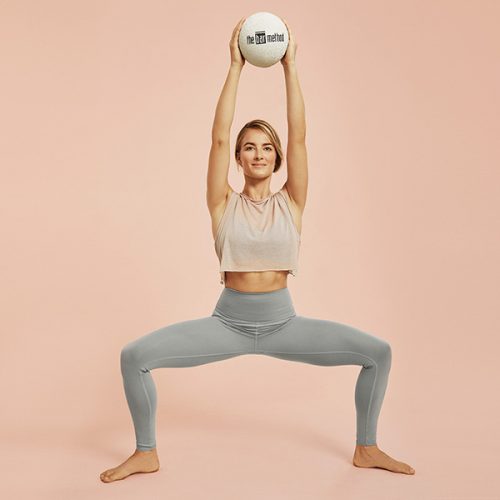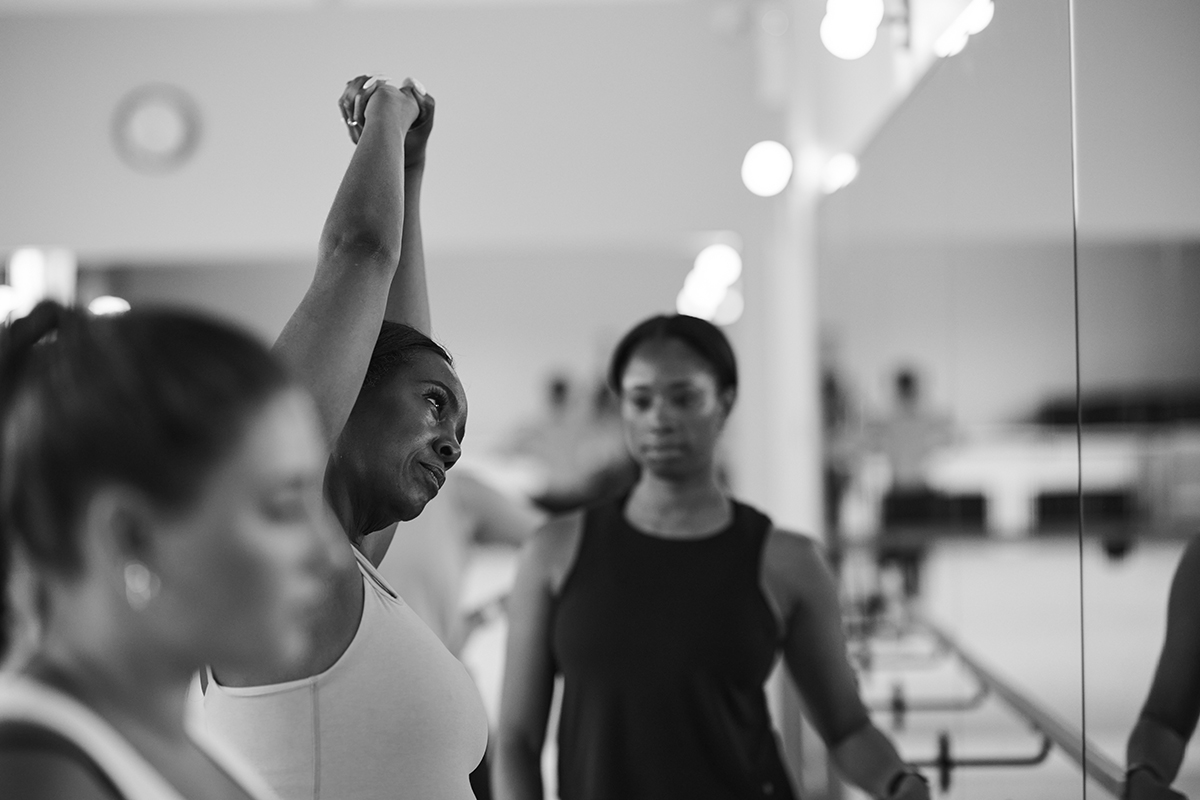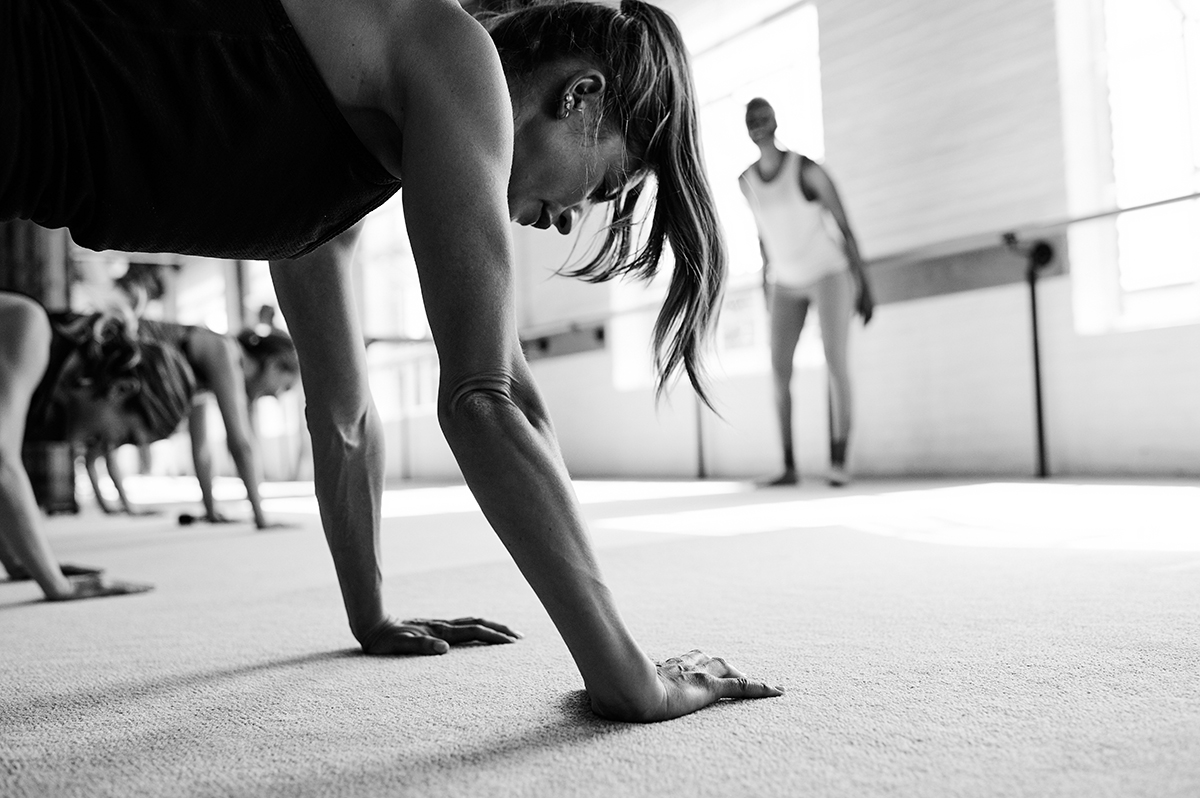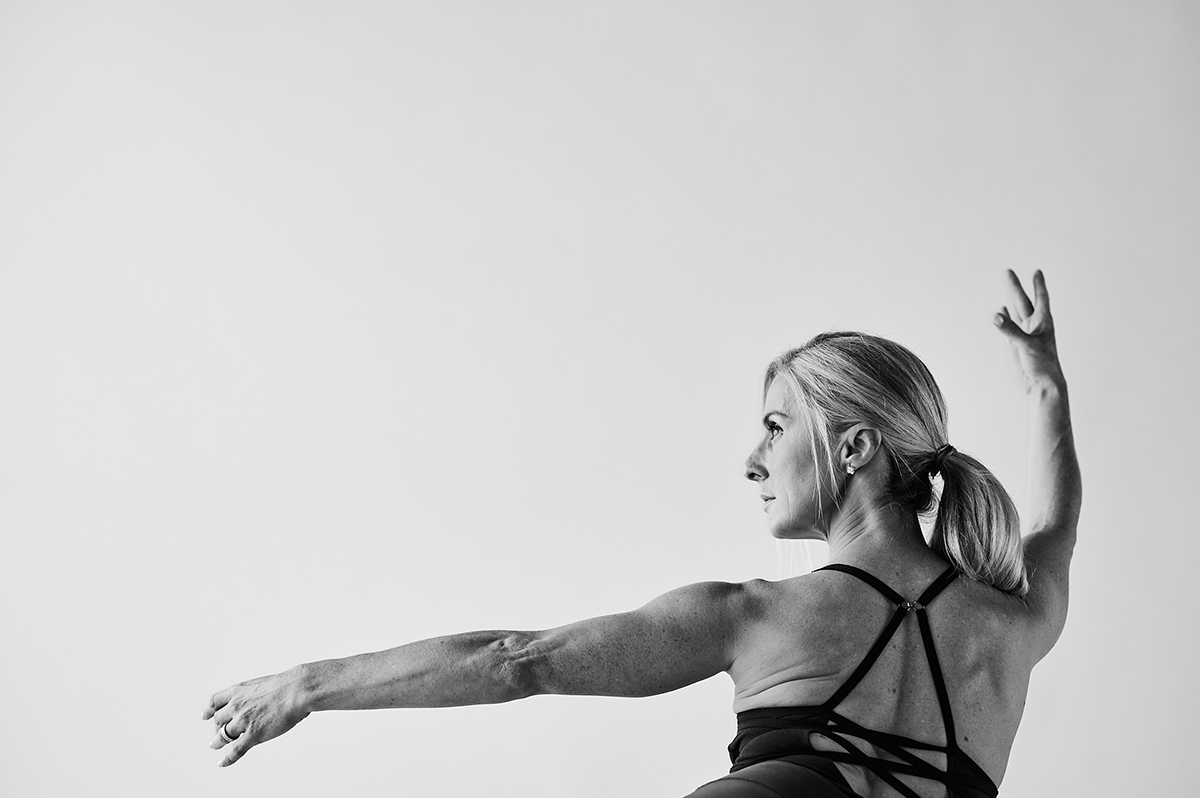New clients! For a limited time, Get 13 Classes for $78 (only $6 per class)
The Science Behind Static Hold Exercises

Throughout the past few months, we have dove into the architecture of The Bar Method and why it is so effective. We explored the benefits of small movements and discussed the science behind repetitive movements. Lastly, we are finishing off our three-part series diving into the benefits behind static holds in fitness and exercise.
Picture the scene: You are in a Bar Method class, in the middle of the second set of thigh work—parallel thigh—and the instructor tells the class to sink two inches lower, hold still and breathe. Immediately, shaking in your legs ensues and it takes everything you have in you to not stand up. Why is this so difficult? Let’s explore the science behind static holds to find out.
Holding a position for an amount of time without moving, also referred to as a static hold, is a type of isometric muscle contraction. This is when a muscle contracts, but no movement is produced. As mentioned above, one example of isometric contractions in The Bar Method is a static hold in parallel thigh work. The quadriceps are engaged in this position but the muscle fibers do not change in length, therefore, no movement is produced. Other examples of isometric exercises that you will meet during a Bar Method class include planks, static curl with the feet on the floor, and holding the working leg still in fold-over.
Benefits of Static Hold Exercises
 While these exercises may sound easy, static holds are often some of the most challenging positions in The Bar Method. Since there is no movement in static holds, the targeted muscle group is in constant contraction for the duration of the position, giving the muscle little to no relief. This not only helps to fatigue muscle faster, but results in increased muscle fiber activation leading to improved strength and endurance. Focusing on static positions aids in the stabilization of the joints throughout the body. They also help build a foundation of strength for more dynamic and explosive movements, like large ranges of motion movements in thigh work or any active exercises in a move class.
While these exercises may sound easy, static holds are often some of the most challenging positions in The Bar Method. Since there is no movement in static holds, the targeted muscle group is in constant contraction for the duration of the position, giving the muscle little to no relief. This not only helps to fatigue muscle faster, but results in increased muscle fiber activation leading to improved strength and endurance. Focusing on static positions aids in the stabilization of the joints throughout the body. They also help build a foundation of strength for more dynamic and explosive movements, like large ranges of motion movements in thigh work or any active exercises in a move class.
Improving balance and posture are two other important benefits of static holds. Think back to holding still in parallel thigh—it’s nearly impossible to hold the position if you are not in correct alignment. Maintaining an upright torso, keeping your shoulders over your hips, lifting your chin and holding your back in a neutral alignment are key components to holding the position for a count of 10, 20 or even longer. Not only are you using your core muscles to hold your balance, but your postural muscles are working overtime to maintain the body’s center of gravity. All of this work translates to better muscle memory and improved postures throughout your everyday activities. It’s no wonder that you walk out of a Bar Method class feeling taller, longer, leaner, and more confident than when you started.
How Static Hold Exercises Challenge Your Mind
One of the most powerful benefits of static exercises actually has nothing to do with the physical body but instead with the mind. Building a strong mind-body connection has always been an added benefit of The Bar Method. Being still in a position gives your body an increased ability to connect with the muscles you are working which can create a more satisfying workout, both mentally and physically. Holding parallel thigh for 20-30 seconds isn’t just physically challenging, but also mentally challenging! Think back to the last time you were asked to hold still in thigh work during class, it probably took much more mental strength to stay in the position compared to physical strength. This exercise in mental strength doesn’t just leave us after class, it continues to follow us day in and day out, creating a more resilient, confident, and determined body and mind. The next time you take class, be proud of not only the physical capabilities you have attained, but also the mental strength you have gained. We hope to see you in class soon!
About the Author

Kerrisa Smith Manheimer has been a licensed physical therapist for over 16 years, and has worked in a variety of settings throughout her career, including orthopedics, outpatient neuro, acute rehab, skilled nursing, acute care and home health. Kerrisa has been a Bar Method student for over 10 years, and an instructor for over 7 years. She currently teaches at The Bar Method Boston. Kerrisa has been the Bar Method national physical therapy consultant for 5+ years, and finds great satisfaction working with The Bar Method HQ team, studio owners and clients. Kerrisa lives in Newburyport, MA with her husband Jeff, and their Bernese Mountain dog Frankie. In addition to taking Bar Method classes, Kerrisa loves to travel and explore new restaurants with her husband and friends.
Haven’t tried The Bar Method yet? Click here to find a studio near you and try your first class!



